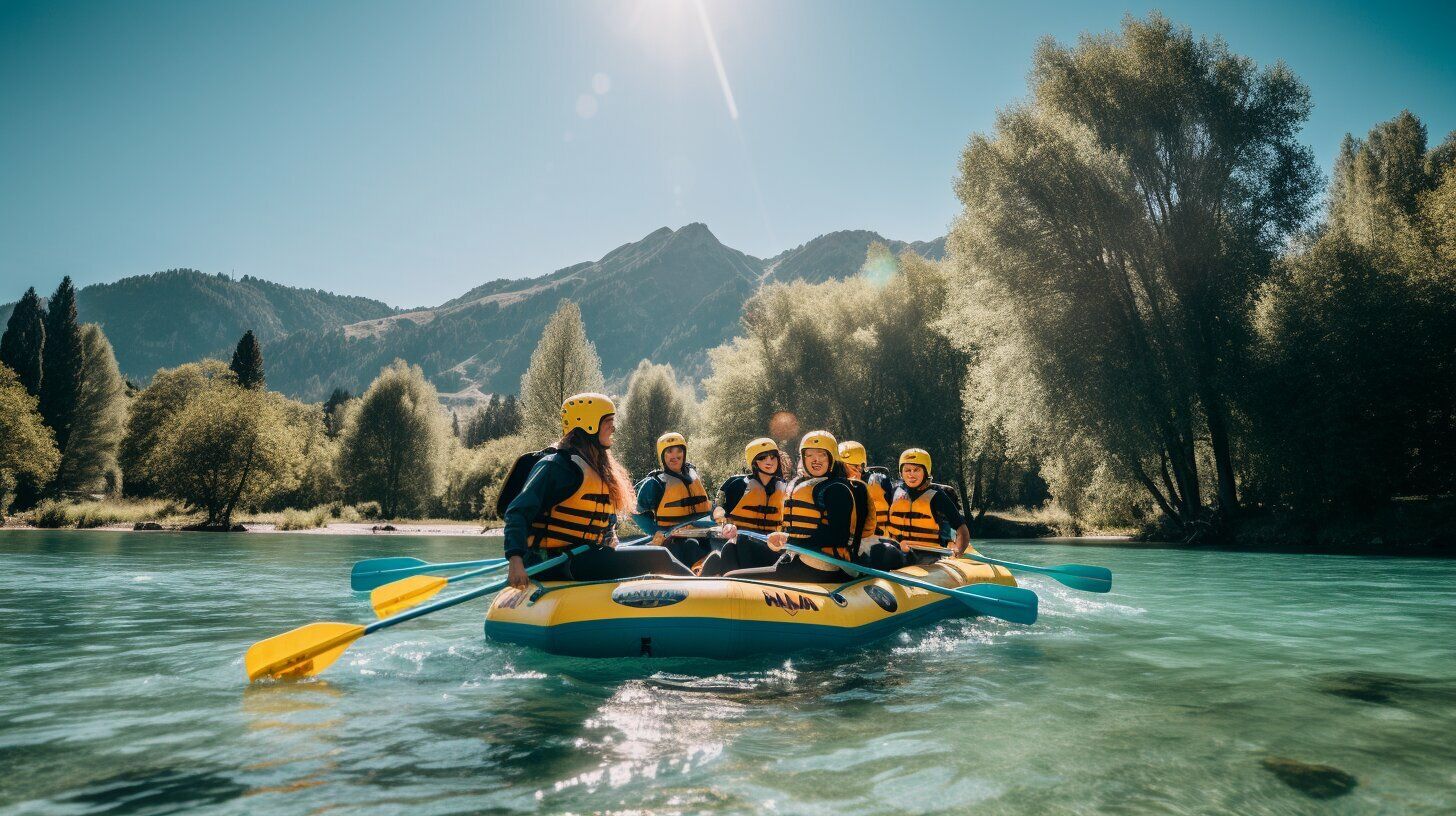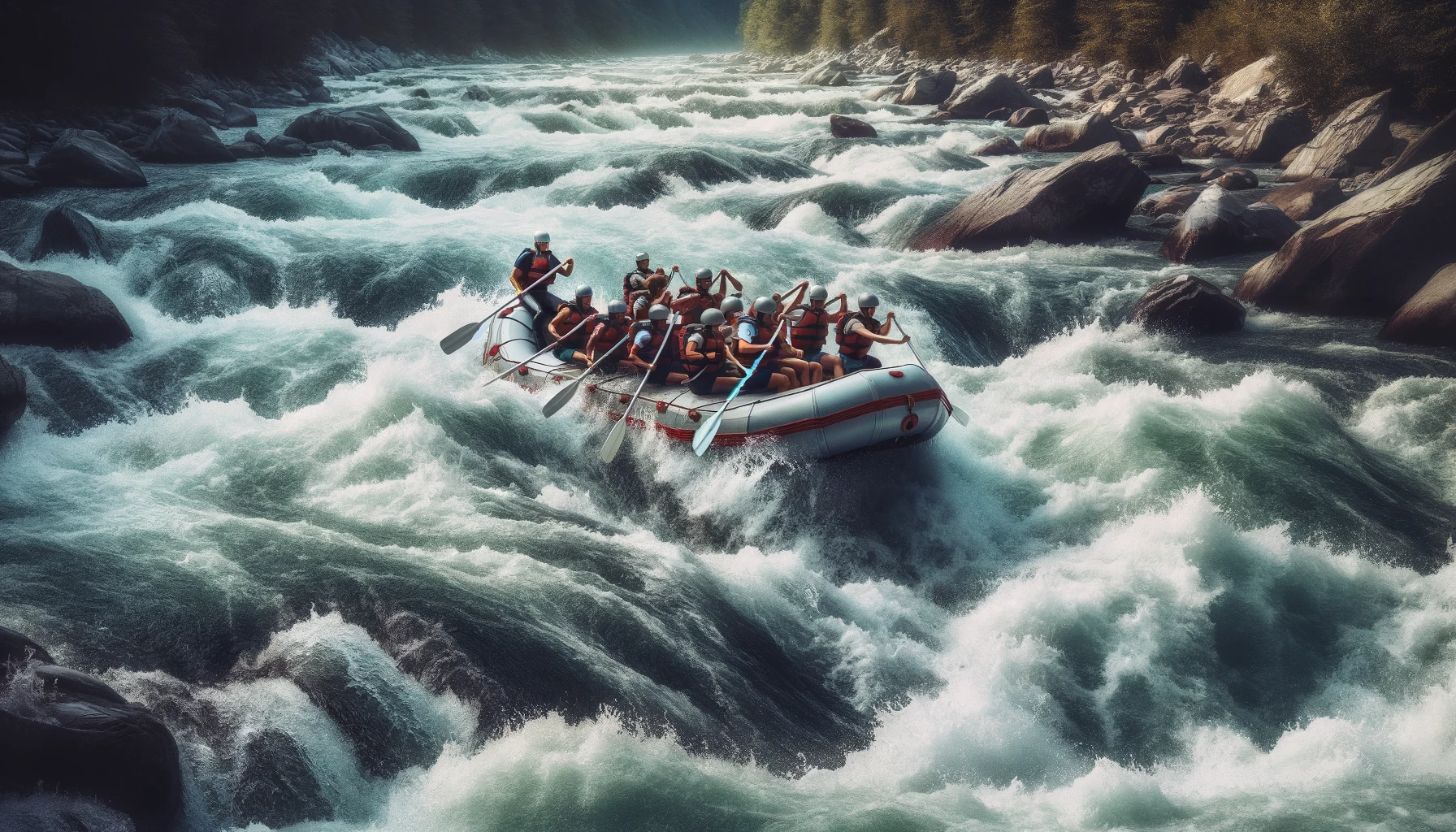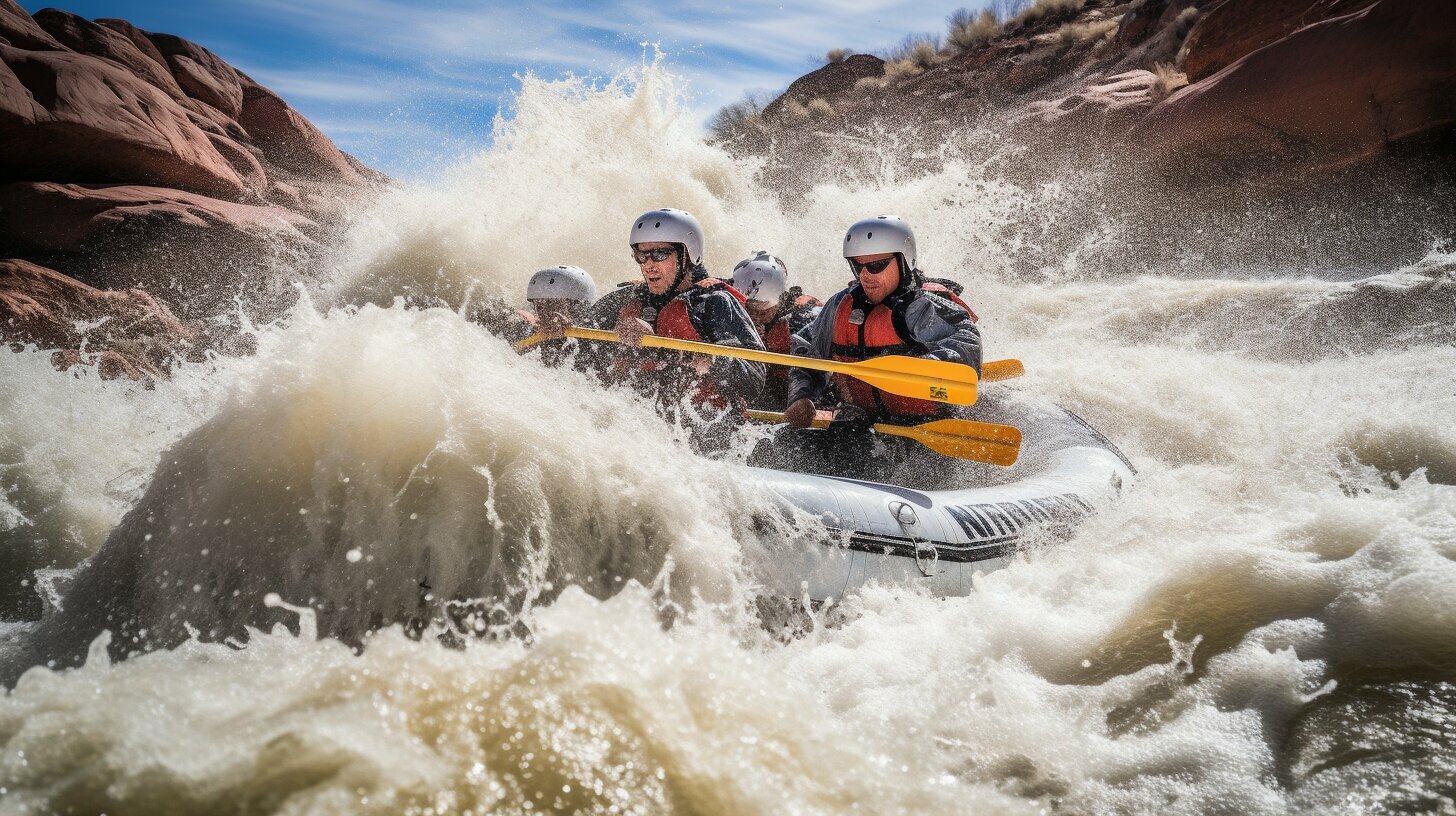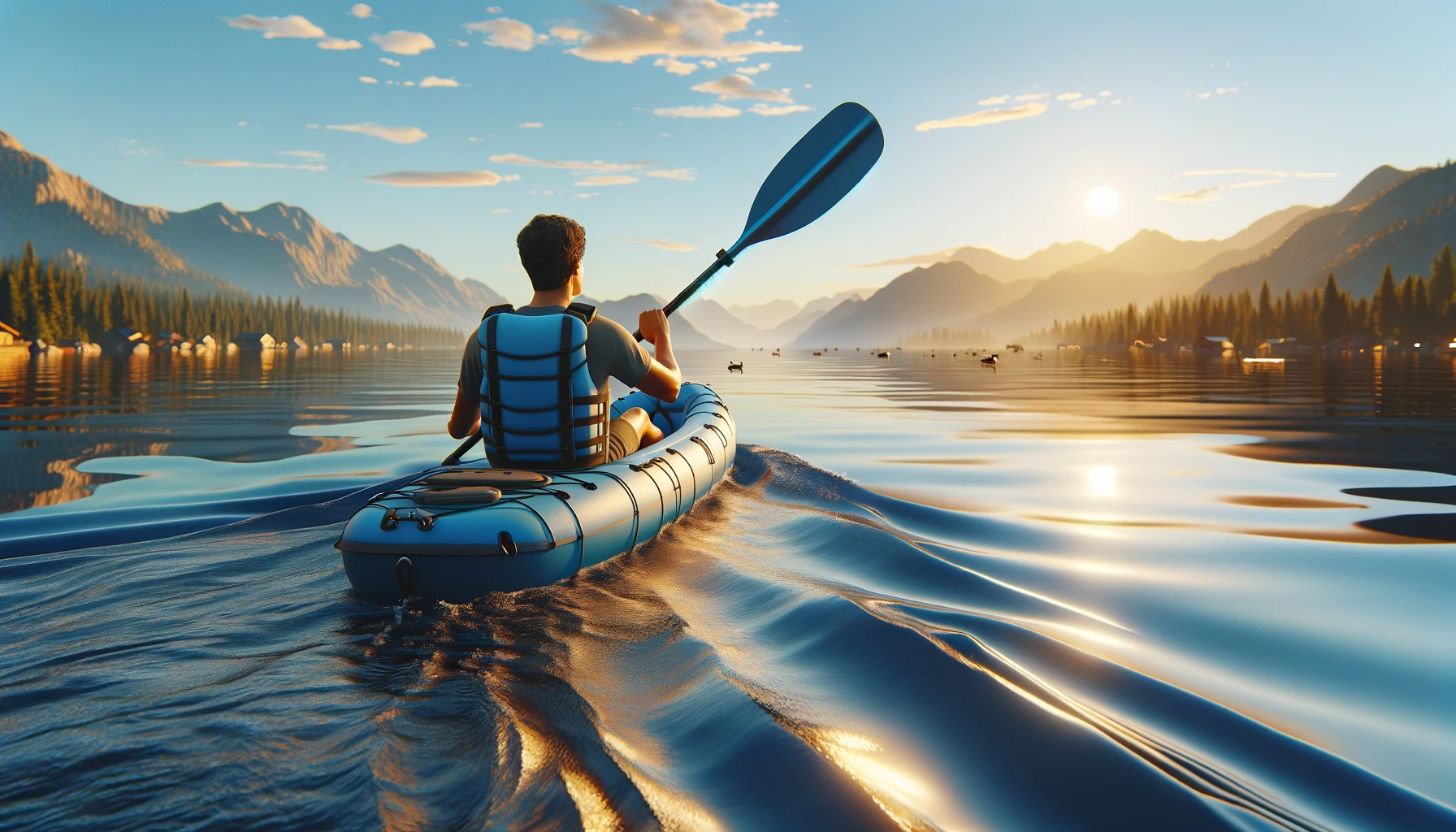If you’re new to rafting, it can be intimidating to know where to start. However, with the right guidance and preparation, anyone can have a thrilling and safe experience on the water. In this beginner’s guide to rafting, we’ll cover everything you need to know to get started in this exciting outdoor activity. From choosing the right destination to mastering foundational techniques and essential safety tips, we’ve got you covered.
Whether you’re an adrenaline junkie looking for a new challenge or a nature lover seeking a unique way to explore the great outdoors, rafting is a fantastic adventure that can be enjoyed by anyone. With our expert tips and guidance, you’ll be ready to take on the rapids with confidence and excitement.
Key Takeaways
- Rafting is an exciting and accessible outdoor activity for beginners
- This guide covers all the essential information you need to know to get started
- Choose the right destination, gear, and trip options based on your skill level
- Safety and environmental responsibility are paramount in rafting
- With proper preparation and guidance, anyone can enjoy a thrilling and safe rafting experience
Why Rafting is a Great Adventure for Beginners
If you’re a first-time rafter or have limited experience, introductory rafting trips are a perfect way to experience the excitement and thrill of whitewater rafting. These easy rafting adventures are specifically designed for beginners, providing a safe and enjoyable experience on the water.
Not only are these trips great for getting a taste of adventure, they’re also an excellent way to connect with nature and enjoy stunning scenery. You’ll paddle through calm sections of the river and splash through gentle rapids, making it an enjoyable activity for friends, families, and solo adventurers alike.
Disclosure: When you buy through links on our site, we may earn an affiliate commission.
Whether you’re seeking a fun weekend getaway or a unique way to experience the great outdoors, beginner-friendly rafting trips offer something for everyone. So grab your paddle, strap on your helmet, and let’s hit the water!
Choosing the Right Rafting Destination for Beginners
If you’re new to rafting, it’s important to choose a beginner-friendly rafting destination. Look for locations with gentle rapids and experienced guides who can cater to novice rafters.
One excellent destination for beginner rafters is the Ocoee River in Tennessee. The river features class III and IV rapids that are perfect for adventurous beginners, while still providing a thrilling experience. Another great option is the Salmon River in Idaho, which offers guided rafting trips that are specifically tailored to beginner skill levels.
When choosing a rafting destination, consider factors such as the length of the trip, the intensity of the rapids, and the overall experience of the guides. Look for companies that offer introductory trips designed specifically for first-time rafters.
Remember, safety should always be a top priority. Stick to well-established, reputable companies that prioritize safety and provide proper equipment and training.
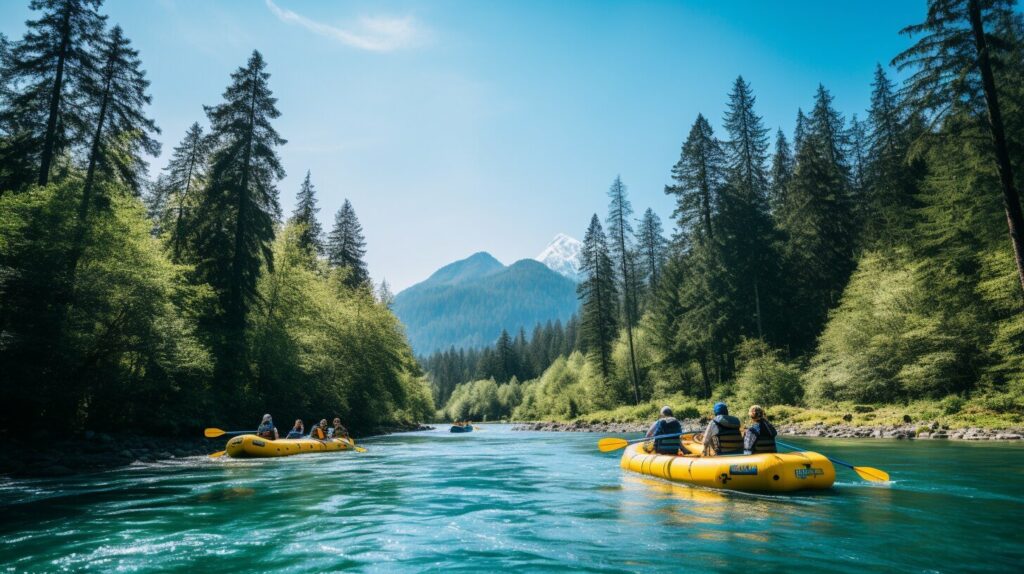
Some other popular beginner-friendly rafting destinations include the Nantahala River in North Carolina, the Snake River in Wyoming, and the American River in California. Do your research, read reviews, and choose a destination that suits your preferences and skill level.
Essential Safety Tips for Beginner Rafters
Rafting can be an exciting and exhilarating adventure, but safety should always be a top priority. Before embarking on your first rafting trip, it’s essential to familiarize yourself with some basic safety tips. Here are some rafting tips for beginners to keep in mind:
1. Wear the Right Gear
One of the most important safety tips for beginner rafters is to wear the proper gear. This includes a personal flotation device (PFD) and a helmet. Make sure your gear fits you properly and is comfortable, as it will be your main source of protection on the water.
2. Know Your Limits
It’s important to assess your skill level and choose a trip that matches your abilities. Don’t attempt to tackle advanced rapids if you’re a beginner. Instead, opt for beginner-friendly white water rafting trips that are suitable for your skill level.
3. Listen to Your Guide
Your guide is an experienced professional, and their instructions should be taken seriously. Listen carefully to their safety briefing and follow their directions while on the water.
4. Stay Hydrated
It’s easy to get caught up in the excitement of rafting, but it’s important to stay hydrated throughout your trip. Bring plenty of water and drink it regularly to prevent dehydration.
5. Be Aware of the Risks
Rafting can be a thrilling adventure, but it also comes with inherent risks. Before your trip, familiarize yourself with the potential hazards of rafting and take necessary precautions to minimize those risks.
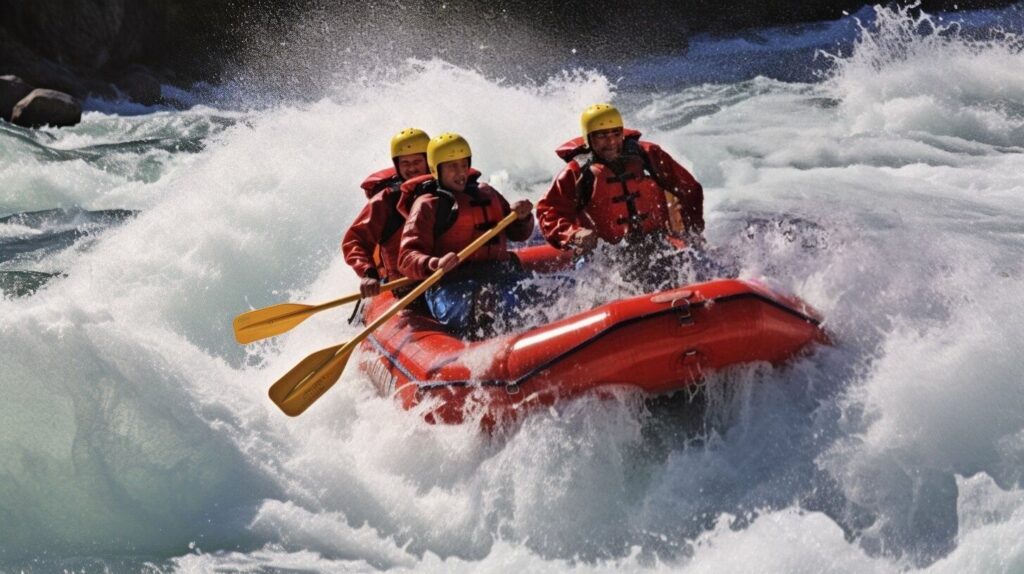
By following these essential safety tips, beginner rafters can enjoy a safe and fun experience on the water. Remember to wear the right gear, stay within your skill level, listen to your guide, stay hydrated, and be aware of the risks. With these tips in mind, you’re ready to hit the rapids and embark on your rafting adventure.
Rafting Techniques for Beginners
When it comes to rafting for beginners, mastering the essential techniques can make all the difference in your experience. Here are some foundational techniques that will help you navigate the rapids with ease:
1. Paddle Technique
The right paddling technique is essential to ensure you work together with your team and effectively maneuver your raft through the whitewater. Hold the paddle with both hands, keeping them shoulder-width apart. Your hands should be placed on the paddle’s shaft, and your upper hand should be slightly above your shoulder level.
When stroking, use your torso instead of just your arms to generate power. Your shoulders should remain relaxed and low, and your paddle should enter the water at a 45-degree angle. Use your core to pull through the water, and maintain the appropriate pace and timing with your teammates.
2. Steering Technique
Learning to steer your raft is crucial to avoid obstacles, navigate turns, and stay on course. To steer, you’ll need to use your paddle as a rudder. You can either paddle forward on one side of the raft or backward on the other to change direction.
Alternatively, you can use your paddle as a braking mechanism by holding it perpendicular to the water, pressing it against the current. This will slow your raft down and help you avoid obstacles.
3. Maneuvering Through Rapids
As you navigate through the rapids, it’s essential to keep your balance and maintain your position within the raft. During smaller rapids, it’s often best to stay seated, while larger rapids may require you to kneel or even stand to maintain stability.
Additionally, it’s essential to communicate with your team effectively. Let them know if you’re shifting your weight or changing your paddle strokes. This will help you stay in sync and maneuver through the rapids safely and effectively.

Remember to stay focused, keep your balance, and communicate with your team to master the art of rafting for beginners.
Gear and Equipment Essentials for Beginner Rafters
As a beginner rafter, it is important to have the right gear and equipment to ensure your safety and comfort on the water. Here are some essentials you’ll need to bring on your rafting adventure:
| Item | Description |
|---|---|
| Personal Flotation Device (PFD) | Ensure that your PFD fits you properly and is approved for whitewater rafting. |
| Helmet | A helmet will protect your head from any impact while rafting. Make sure it fits snugly and securely. |
| Footwear | Wear footwear that provides good traction and won’t come off in the water. Old sneakers or water shoes are good options. |
| Clothing | Dress appropriately for the weather and water temperature. Synthetic fabrics are recommended as they dry quickly and keep you warm. |
| Waterproof Bag | A waterproof bag will keep your personal items dry while rafting. You can also store any snacks or drinks you bring in it. |
Make sure to check with your rafting company about what gear they provide and what you need to bring. It’s crucial to be prepared and have the right gear to fully enjoy your rafting experience.
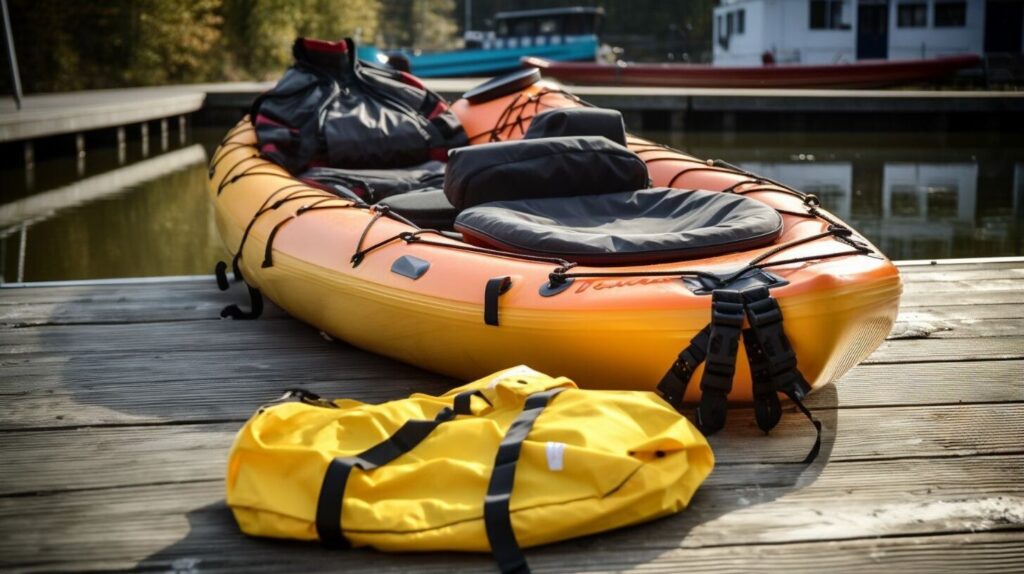
Choose a Beginner Rafting Trip
If you’re new to rafting, it’s important to choose the right trip that matches your skill level. Beginner-friendly white water rafting trips are the perfect way to dip your toes into this exciting world. These trips typically feature calmer rapids, experienced guides, and equipment suited to beginners.
When choosing a rafting trip, consider the location, difficulty level, and duration. Some trips are only a few hours, while others can take a full day or even multiple days. Make sure to check with the rafting company if the trip is suitable for beginners, and don’t be afraid to ask any questions you may have.
Another important factor to consider is the season. Spring and early summer are typically the best times for beginner rafters, as the water levels are lower and the rapids are milder.
Remember, the goal of a beginner rafting trip is to have fun and gain experience on the water. Don’t feel pressured to tackle more advanced rapids before you’re ready. Take your time and enjoy the journey!
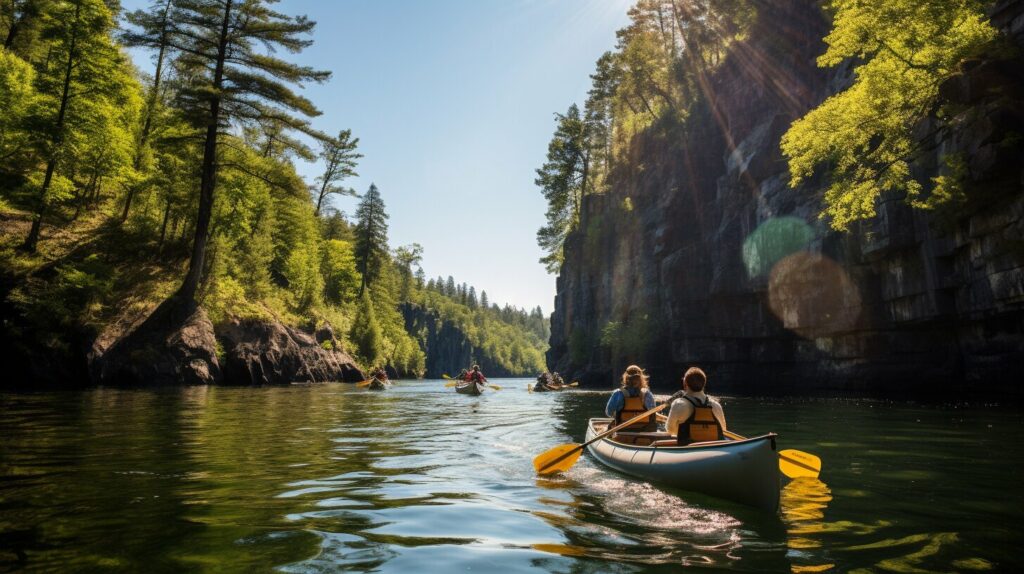
Rafting Etiquette and Environmental Responsibility
Rafting is a thrilling outdoor activity that allows you to commune with nature and navigate rapids. However, as a beginner, it’s important to understand the importance of proper etiquette and environmental responsibility while enjoying this activity.
Respect nature, other rafters, and local communities by following these guidelines:
- Always follow the instructions of your guide and abide by safety regulations.
- Avoid littering or leaving any trash behind. Pack out everything you brought with you.
- Do not disturb wildlife or their habitats. Keep a safe distance from any animals you may encounter.
- Respect other rafters on the water. Avoid excessive noise or behavior that may interfere with their enjoyment of the activity.
- Be mindful of any cultural or historical sites along the river. Avoid damaging or disturbing any artifacts or sites.
By adhering to these principles, you can help preserve the natural environment and ensure an enjoyable experience for yourself and others.
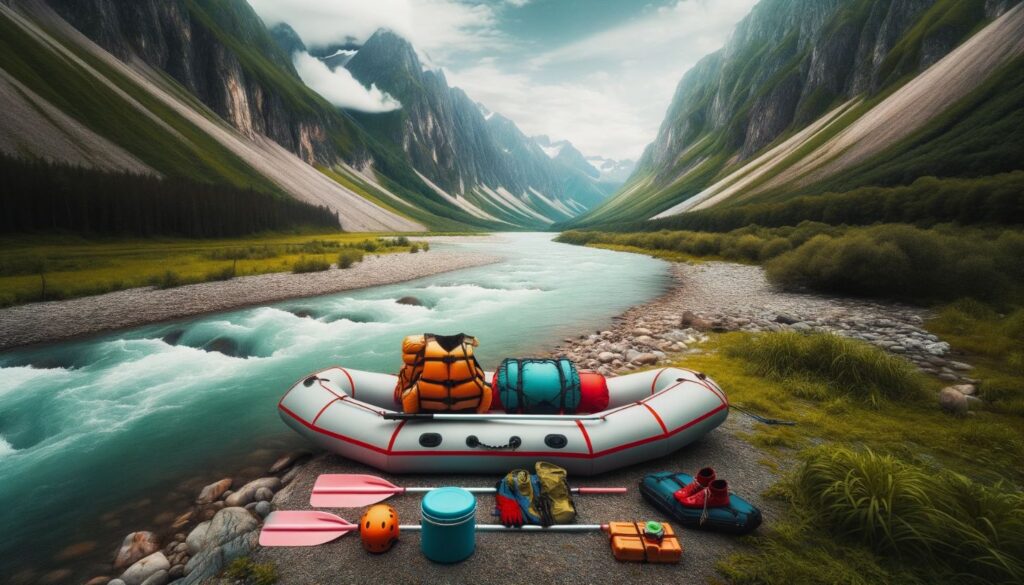
Conclusion
After reading this beginner’s guide to rafting, you should feel confident and excited to embark on your first whitewater adventure. Remember that safety should always be your first priority, so make sure to choose a destination and a trip that matches your skill level and experience.
As you discover the thrill and excitement of rafting, don’t forget to respect the environment and other rafters. Follow rafting etiquette guidelines and practice environmental responsibility to ensure that future generations can enjoy this incredible outdoor activity.
Whether you’re looking for a fun way to bond with friends and family or seeking an adrenaline rush, rafting is a perfect choice for beginners. With the right gear, essential skills, and a positive attitude, you’ll be navigating rapids like a pro in no time.
FAQ
Can anyone go rafting, even if they have no previous experience?
Absolutely! Rafting is a beginner-friendly adventure that welcomes people of all skill levels. Many rafting outfitters offer trips specifically designed for beginners, allowing you to enjoy the thrill of rafting even if you have no prior experience.
Is rafting a safe activity for beginners?
Rafting can be a safe activity for beginners, as long as proper safety precautions are taken. It is important to choose reputable outfitters that provide experienced guides, safety equipment, and thorough instructions. Following safety guidelines and listening to your guide’s instructions will help ensure a safe and enjoyable rafting experience.
What should I wear while rafting as a beginner?
It is recommended to wear quick-drying clothing, such as swimwear or moisture-wicking athletic wear, while rafting. Avoid cotton clothing that can become heavy when wet. Additionally, it is essential to wear a secure and well-fitting personal flotation device (PFD) provided by the outfitter to ensure your safety in the water.
Can I go rafting as a beginner if I can’t swim?
Yes, you can go rafting as a beginner even if you can’t swim. Wearing a personal flotation device (PFD) is mandatory while rafting, which provides buoyancy and keeps you afloat in the water. However, it’s important to discuss your swimming abilities with the outfitter beforehand to ensure they can accommodate your needs and provide additional assistance if required.
How physically demanding is rafting for beginners?
Rafting trips designed for beginners typically offer a range of difficulty levels, allowing you to choose a trip that suits your physical fitness and comfort level. While some trips may feature challenging rapids, others focus on calmer sections of the river. It’s important to communicate your physical abilities and preferences with the outfitter when choosing a rafting trip.
Can I bring my camera or phone while rafting as a beginner?
It is generally not recommended to bring valuable electronics, such as cameras or phones, while rafting as a beginner. The risk of water damage is high, and it’s best to leave such items in a secure location. If you want to capture memories, consider investing in a waterproof camera or asking your guide if they offer photo or video services during the trip.
How long do beginner rafting trips usually last?
The duration of beginner rafting trips can vary depending on the specific trip and outfitter. Some trips may last a few hours, while others may span multiple days. It’s important to check the details provided by the outfitter or contact them directly to understand the duration and itinerary of the trip you are interested in.
What if I fall out of the raft while rafting as a beginner?
Falling out of the raft is a possibility, but it is a rare occurrence when proper safety guidelines are followed. If you do happen to fall out, it’s crucial to stay calm and follow your guide’s instructions. They will provide guidance on how to get back into the raft or float in the water until rescued. Wearing a personal flotation device (PFD) will help keep you buoyant in the water.
Can children participate in rafting as beginners?
Yes, children can participate in rafting as beginners, but it’s essential to check the minimum age requirements set by the outfitter and ensure they provide appropriate trips for young participants. Additionally, children should be comfortable in the water and able to follow instructions for their safety and the safety of the group.

